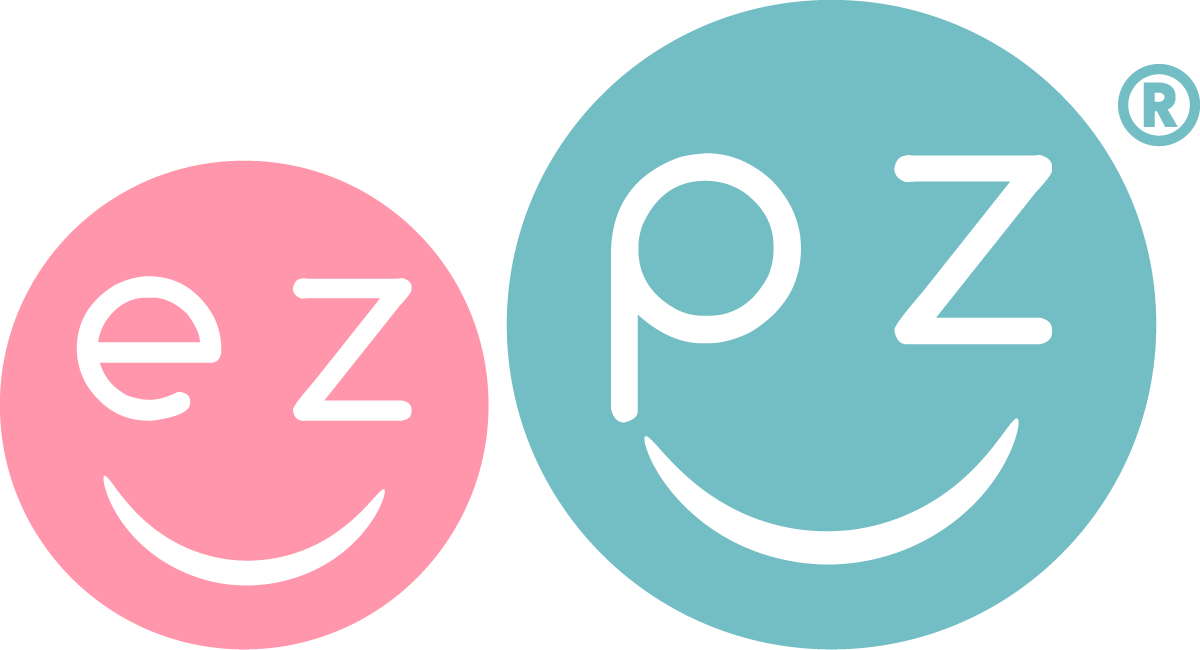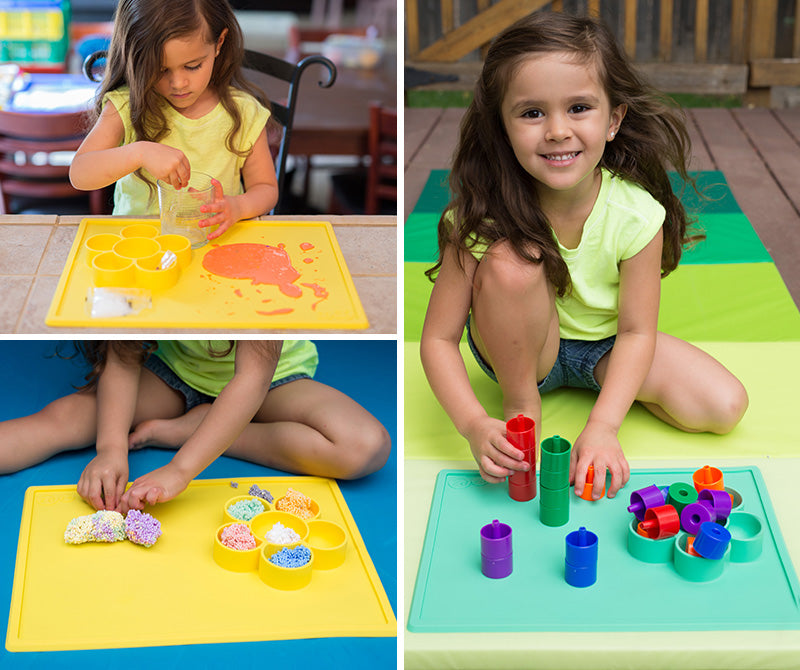It’s time for some sensory play peeps! Not only do sensory activities encourage kids to explore new textures and materials, they can also help children develop new skills. Play-Doh, sensory bins, bubbles and water beads are just a few examples of activities that give kids the opportunity for sensory exploration. The key to making sensory activities successful is to make them fun and easy (plus easy to clean up!). Here are three sensory activities you can try with your children on the Play Mat.
Foam: Kids love playing with the squish-able and squash-able properties of foam. I love using it in therapy, but it was always such a pain to cleanup! Now I use it on the Play Mat, and cleanup has become ezpz - the foam clumps together on the silicone mat! I also find that kids are drawn to the way I separate the foam colors in the flower compartments, which makes it an organization activity for both individual and group play. I use foam for reinforcement, sensory breaks, color matching, managing behaviors, improving fine motor skills, creative play and improving speech and language skills. In my experience, kids open up and talk when playing with foam, which I use to my advantage in a therapy session. If you are hesitant about buying foam for your kids because of the mess, try using it on the Play Mat!
Manipulatives: Manipulatives are found in large quantities in classrooms, homes and therapy centers, but what are manipulatives? In the context of teaching, manipulatives are items that children use to support hands-on learning through play. Legos, crayons and blocks are a few examples that are great for teaching skills like counting, sequencing, colors and prepositions. To avoid stepping on that dreaded Lego, try using the Play Mat to keep toys and crafts on the mat, instead of on the floor. Placing manipulatives in the flower compartments also keeps the task clutter-free while improving a child’s attention to the activity.
Slime: You can make homemade slime with glue, dish soap, laundry detergent, borax or liquid starch. I prefer to opt for less toxic ingredients when working with sensory kiddos that might lick their hands or accidentally eat the slime. Here is my ezpz sensory slime recipe.
Ingredients:
2 Tbsp. Cornstarch
1 Tbsp. Water
Food coloring
Directions:
Have your kids put the corn starch into a clear bowl and add some water. Ask them to slowly mix the ingredients with a spoon. Continue to add small amounts of water until it reaches the consistency your child prefers (some children like a runny texture and others like a more solid consistency). Pick a color and add a few drops of food coloring. Continue to stir the slime until the color is completely mixed in. Then, have your child knead the slime with their hands to make sure it is the perfect texture. That’s it; now start having slimy fun!
How do you use slime and other sensory games with your kids? What is your favorite homemade slime recipe?



